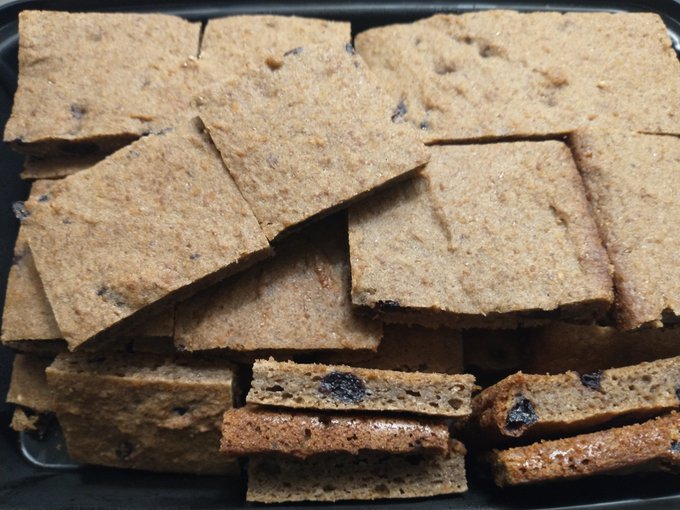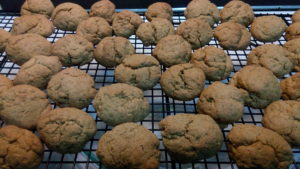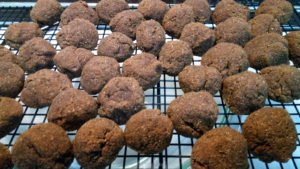Male pattern baldness, thinning at the forehead scalp line, can have genetic reasons and can be more likely when autoimmunity is a factor. The hair follicles become dysfunctional due to autoimmune changes. Malnutrition of adequate protein, trace minerals, and B vitamins, methylated forms, may also be involved, and also essential fatty acids and phospholipids play a role.
Nutrients that play a role in hair growth or other growth and energy pathways:
- Methyl folate, methyl B12, choline, other B vitamins,
- Magnesium, especially Epsom salt soaks, which provides sulfate also,
- Trace minerals including boron, silicon, manganese, molybdenum, copper, and especially zinc, and inadequate Iodine in ratio to excess halides (bromide, fluoride, chloride), is likely involved,
- Nrf2 promoting foods (page G10)/herbals, especially sulfur containing foods like onions and cruciferous vegetables. Herbs and Spices adds more of the Nrf2 promoting phytonutrients in addition to trace minerals and other vitamins. See page G10. Nrf2 Promoting Foods, on the site: effectivecare.info.
- p53 promoting foods is a similar list with some more specific herbals.
- Fennel seeds or fennel oil, seem to particularly help hair growth, and other
- Phospholipid rich foods also can help build strong flexible membranes which are needed for strong hair or healthy cells: seeds, nuts, whole grains, cumin, coriander, cardamom,
- Protein adequacy – hair is made of protein,
- Omega 3, EPA/DHA, is also involved in having strong flexible membranes,
- Moderate carb, higher fat from coconut & olive oil & pumpkin seeds/blanched almonds, can help reduce inflammation.
Low stomach acid may be factor in low B vitamin level. 2 spoons of apple cider vinegar or lemon juice with a meal can help low stomach acidity & increase B vitamin intake. It is similar type of acidity.
Fennel seeds or Fennel oil (how to make it yourself link)
Fennel seeds – eat them and are used in a scalp and hair oil by making your own or buying some Make your own, link: How to make Saunf – Fennel Oil and use for Hair Growth Benefits; Prevents Hair Loss Cleanses Scalp. (herzindagi.com)
Fennel Seed Oil product page, *unaffiliated: Fennel Seed Oil Benefits.
- “Free radicals are detrimental to the hair. Without enough antioxidants in the body, free radicals can cause oxidative stress, which impedes hair growth and causes thinning. Fennel seeds are packed with antioxidants, as well as nutrients like pantothenic acid, iron, molybdenum, copper, folate, iron, and niacin that stimulate hair growth.” (simplyorganicbeauty.com)
Magnesium, protein & phospholipids are needed for reducing oxidative stress whether it is from fear, worry, physical work or exercise, or from an infection or chronic illness. Volatile chemicals from new vinyl furnishings or smoke or smog may also increase inflammation. Poor sleep quality, bright lights in the evening, or EMF exposure anytime, may be increasing low level chronic inflammation. https://twitter.com/deNutrients/status/1508741284281950211?t=1bZp3cy352Op2cH0H64-Gg&s=19…
This site http://Transcendingsquare.com has my main magnesium blogs: To have optimal magnesium needs protein and phospholipids too (Food sources and supplement types of magnesium and food sources of phospholipids and the basic protein minimal requirements for a healthy diet. We can not have electrically active ions of magnesium present in excess, or other ions.
Protein transport proteins carry magnesium and other trace minerals and may be shared. So too much of one type can cause a deficiency of another type of trace mineral – as seen with the interaction between high intakes of zinc leading to low copper, or high intakes of copper leading to low zinc. (to-have-optimal-magnesium-needs-protein-and-phospholipids-too/)
A personal success story – low oxolates, gluten free, moderate carb Paleo approach:
Carla Coulson shares about her own strategies that helped with her autoimmune and alopecia hair loss symptoms – she uses a Paleo approach which may be a higher protein balance than I tend to recommend (Moderate carb calorie diet: 30% carb/45-50% fat/20-25% protein). Lower carbohydrate intake and adequate protein is likely helpful for reducing inflammation and improving mitochondrial health and cytokine balance.
Cutting out gluten and going on a low oxalate diet were also important steps she says in the article: Cutting out gluten and going on a low oxalate diet were also important steps she says in the article: Auto-immune – going, going, almost gone! CarlaCoulson.com.
Immune Cell – cytokines and myokines
Cytokines or myokines (like cytokines but formed by muscle cells during activity) are inflammatory signals made in response to physical or emotional stress and they cause junior immune cells to differentiate into more specialized types. The types vary to respond to different types of pathogens, or other needs.
Excessive numbers of active immune cells may be created during an infection or stressful time of life from the increased amounts of inflammatory cytokines, or for people with very strenuous physical work or exercise as more myokines form with increased muscle activity. Having an excess of myokines from muscle overwork, or excess cytokines from EMF exposure, infection, or a really stressful day, can lead to more junior immune cells converting into whatever active form the specific type of cytokine or myokine causes.
This increase in immune cells may lead to more risk of antibodies forming against food proteins that also resemble one of our own proteins. These antibodies then attach to our tissue and our own immune cells then attack one of our own cells. This leads to autoimmune damage to cells and tissues that have a lot of that type of protein. The gluten protein found in wheat, barley, rye, and other grains is similar thyroid tissue and can be a factor in autoimmune thyroid disease. Molecular mimicry – dietary molecules mimicking a body protein can cause the immune antibodies to be formed against the body protein.
In the case of spike lodged in a receptor, the numerous immune cells may make autoimmune antibodies against that type of receptors. Video https://odysee.com/@BacktoBasics:e/99-Etappensiege-Original—Dr.-Sherri-Tenpenny:d
The risk of antibodies forming against food proteins is also more likely if leaky bowel membranes are a problem – leaky in the sense that larger size proteins can slip through gaps between cells (called tight junctions). The mucus or jelly like glycocalyx layer that coats our mucus membranes and intestinal lining, helps close that gap between cells. Eating more foods like okra, or slippery elm powder in tea, can help add to the fibrous structure of the glycocalyx.
As a bonus for eating more fiber rich foods, including the gooey ones (mucilaginous starches – can attract and hold water kind of like a sponge), the hair follicle is also supported. The glycocalyx, extracellular matrix (semi-solid fluid environment surrounding our cells), and the hair follicle which grows and supports our individual hairs, are all made in part with proteoglycans. (4)
- “The proteoglycans are part of membrane cell,
- they are part of the glycocalyx and the extracellular matrix,
- they are compound by carbohydrates and sulfated amino acids
- that confers negative charges able to attract water and form gels that resist mechanical forces in the connective tissue,
- as well as function as a semipermeable and selective membrane to various cationic molecules [positive charged ions or other larger molecules with a positive charge],
- its direct and indirect interaction with membrane receptors and growth factors regulates several transcription ways involved in the development of multiple pro-oncogenic processes.” (4)
Sulfur containing produce can help promote Nrf2 and provide bioavailable sulfur compounds for our proteoglycan needs. Baths, foot or hand-soaks with Epsom salt, magnesium sulfate, would also help.
Nrf2 is the short name for a gene and the protein it encodes. It helps promote the activation of genes that make antioxidants and promote growth and repair. Sulfarophane is another sulfur containing phytonutrient found in broccoli and other cruciferous vegetables. It is also an Nrf2 promoter. Any of the Nrf2 promoting molecules also tend to be inhibitors of inflammatory pathways as there are circadian cycle proteins that are shared. Simplified example: An assembly line might make one product on the night shift and another on the day shift using the same machine – so the two products can not be made at exactly same time – because the machine is busy.
The membrane control of the positively charged cationic molecules is an important function of proteoglycans and their presence in hair follicles might help explain why radiation poisoning causes hair to fall out. Proteoglycan replacement therapy was found helpful for reducing hair loss in male or female pattern balding. (5)
“Research shows that bioactive proteoglycans, e.g., versican and decorin, can actively trigger follicular phase shift by their anagen-inducing, anagen-maintaining, and immunoregulatory properties. This emerging insight has led to the recognition of “dysregulated proteoglycan metabolism” as a plausible causal or mediating pathology in hair growth disorders in both men and women. In support of this, declined expression of proteoglycans has been reported in cases of anagen shortening and follicular miniaturisation.
To facilitate scientific communication, we propose designating this pathology “follicular hypoglycania (FHG),” which results from an impaired ability of follicular cells to replenish and maintain a minimum relative concentration of key proteoglycans during anagen. Lasting FHG may advance to structural decay, called proteoglycan follicular atrophy (PFA). This process is suggested to be an integral pathogenetic factor in pattern hair loss (PHL) and telogen effluvium (TE).” (5)
Low carb diets or moderate low (30% calories from carbohydrates) can help fight inflammation.
Higher carbohydrate diets, such as the standard American diet, cause the body to use B vitamins and magnesium in greater amounts which can lead to deficiency, and store excess carbohydrates as fats throughout the body or excess fructose is converted into fats stored in the liver. When the body is busy making and storing fats in adipose/fat cells, then it can’t be doing other things like growing hair.
Our body needs us to be efficiency experts for it and our microbiome and part of that efficiency is detox and moisture. The glycocalyx or extracellular matrix or our hair follicles can not work well if to dry. We are about 60-70% water and it helps move nutrients to cells and take away toxins. Thick congestion that makes it hard to breathe is glycocalyx that is too dry while a drippy nose with allergy season thin watery mucus is too wet. Health generally is a balance. Drinking plenty of water and moving regularly can use our motion to help the blood vessels circulate nutrients to all of our cells and our lymphatic system to remove toxins.
Disclaimer: This information is being provided for educational purposes within the guidelines of Fair Use and is not intended to provide individual health guidance. Please seek a functional health practitioner for individual health guidance.
Reference List
- Haslam IS, Jadkauskaite L, Szabó IL, Staege S, Hesebeck-Brinckmann J, Jenkins G, Bhogal RK, Lim FL, Farjo N, Farjo B, Bíró T, Schäfer M, Paus R. Oxidative Damage Control in a Human (Mini-) Organ: Nrf2 Activation Protects against Oxidative Stress-Induced Hair Growth Inhibition. J Invest Dermatol. 2017 Feb;137(2):295-304. doi: 10.1016/j.jid.2016.08.035. Epub 2016 Oct 1. PMID: 27702566. https://pubmed.ncbi.nlm.nih.gov/27702566/
- Pham CT, Romero K, Almohanna HM, Griggs J, Ahmed A, Tosti A. The Role of Diet as an Adjuvant Treatment in Scarring and Nonscarring Alopecia. Skin Appendage Disord. 2020;6(2):88-96. doi:10.1159/000504786 https://www.ncbi.nlm.nih.gov/pmc/articles/PMC7109385/
- European Medicines Agency. 2008. Assessment Report on Foeniculum Vulgare Miller. Available: https://www.ema.europa.eu/en/documents/herbal-report/assessment-report-foeniculum-vulgare-miller_en.pdf
- Sánchez-álvarez, I. & Ponce-Olivera, R.M.. (2017). Role of proteoglycans in the hair follicle. Dermatologia Revista Mexicana. 61. 474-486. https://www.researchgate.net/publication/322852013_Role_of_proteoglycans_in_the_hair_follicle
- Wadstein, Jan & Thom, Erling & Gadzhigoroeva, Aida. (2020). Integral Roles of Specific Proteoglycans in Hair Growth and Hair Loss: Mechanisms behind the Bioactivity of Proteoglycan Replacement Therapy with Nourkrin® with Marilex® in Pattern Hair Loss and Telogen Effluvium. Dermatology Research and Practice. 2020. 1-17. 10.1155/2020/8125081. https://www.researchgate.net/publication/341166634_Integral_Roles_of_Specific_Proteoglycans_in_Hair_Growth_and_Hair_Loss_Mechanisms_behind_the_Bioactivity_of_Proteoglycan_Replacement_Therapy_with_NourkrinR_with_MarilexR_in_Pattern_Hair_Loss_and_Teloge



